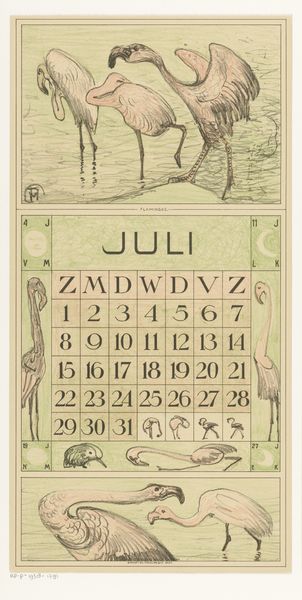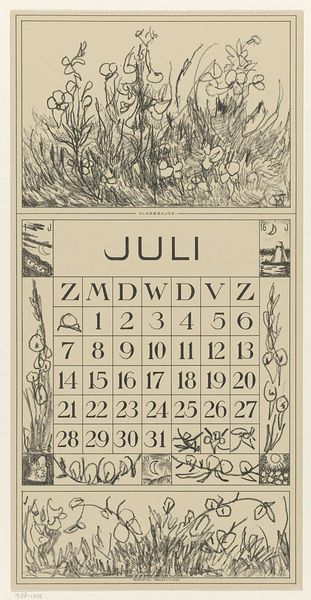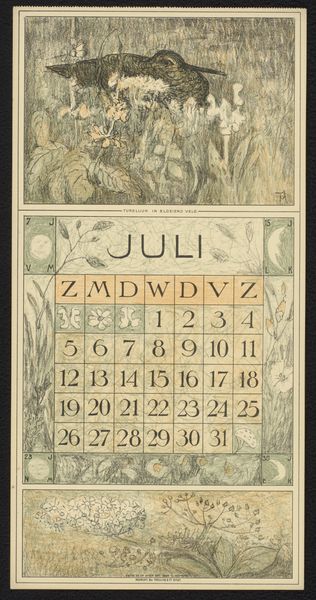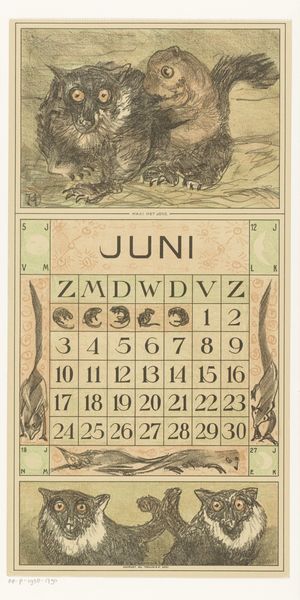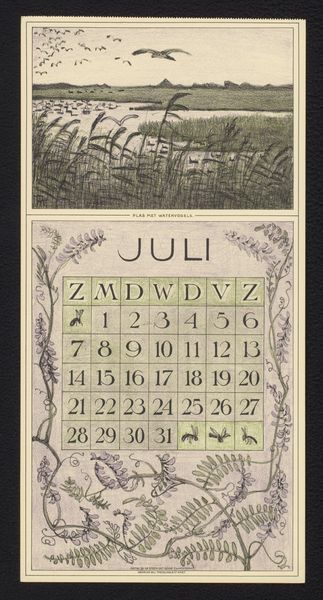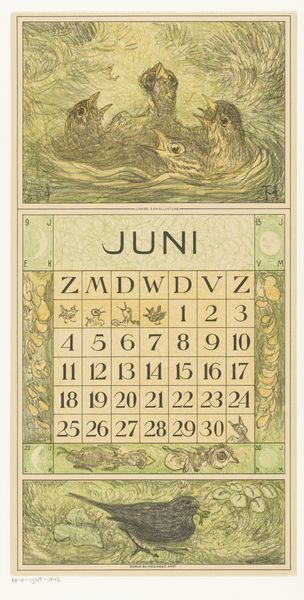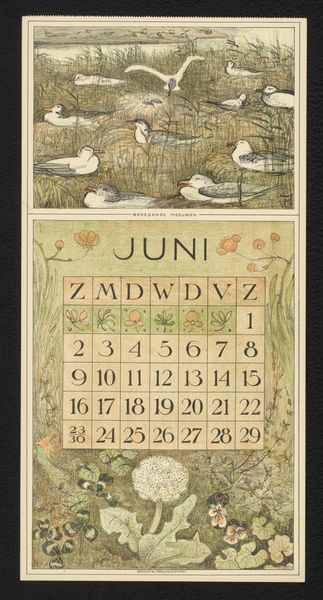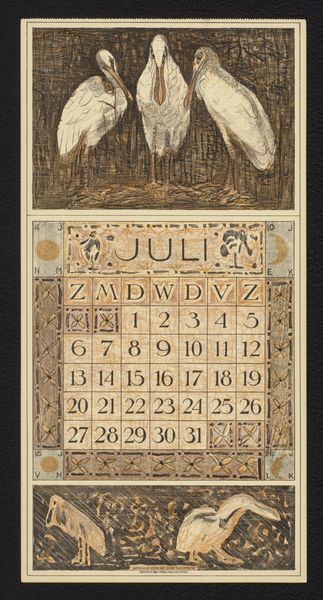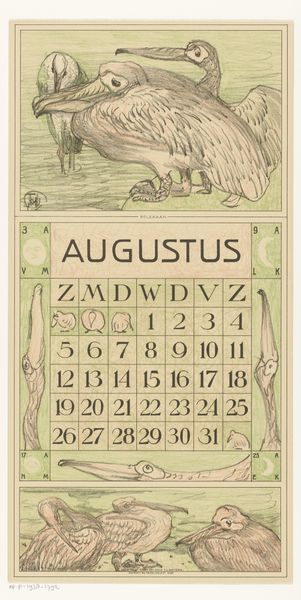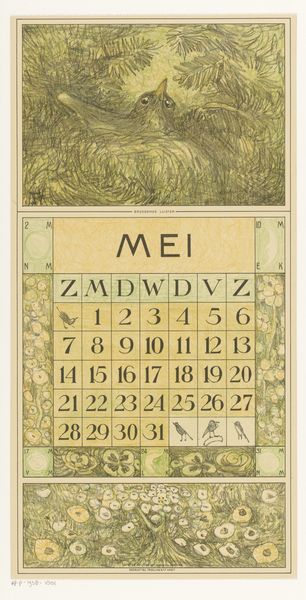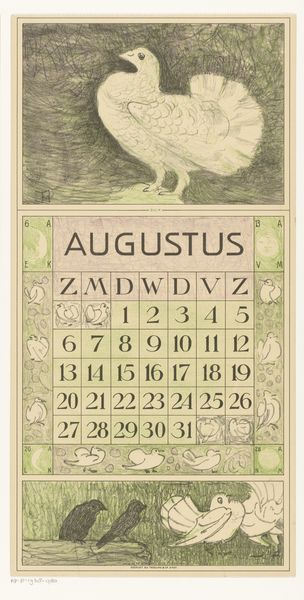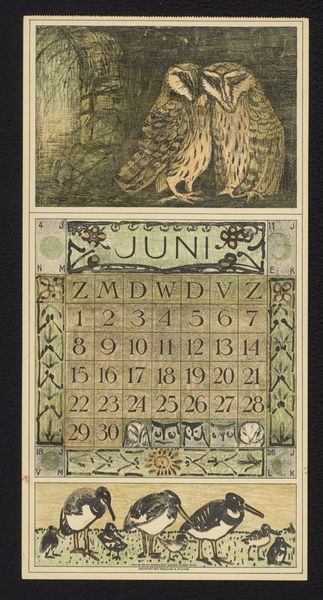
Dimensions: height 420 mm, width 210 mm
Copyright: Rijks Museum: Open Domain
Curator: Theo van Hoytema's "Kalenderblad juli met scholeksters" from 1914 greets us. It resides here at the Rijksmuseum, a subtle watercolour wonder. Editor: It feels so charming, a gentle nudge towards summer. The composition, that pale wash and then those curious little birds…almost dreamlike, isn't it? Curator: Absolutely. Hoytema's affection for birds is quite clear. The oystercatchers, or "scholeksters" as they're known in Dutch, aren't simply decoration. They function as totems. Observe how they are almost rigidly designed in the top and bottom vignettes, bookending the calendar grid itself. It evokes this dance between the cyclical rigidity of time, measured and structured, alongside nature itself. Editor: I'm particularly drawn to that grid—those small avian figures dotting the edges…they’re practically hieroglyphs! Reminders of a nature-bound rhythm we so easily lose track of, right? Time before time, one might say. Curator: Precisely. They’re echoes of a pre-industrial, pre-digital age. The image really asks us what our relationship with time even IS anymore… Editor: Those oystercatchers themselves become fascinating symbols. The bird, the egg... they each have ancient connections to fertility, renewal, resilience. How does Hoytema's imagery allow them to retain or reinvent that symbolism? Curator: That direct engagement with symbolism… it allows us to slow down and recognize an image that does far more than denote a bird, or the month of July. Its emotional weight connects to far older stories about time and being. It almost doesn't matter that it's July...or that it's an oystercatcher... those figures represent how the old archetypes recur in all sorts of new forms. Editor: Seeing it all together…calendar, birds, the whisper-thin watercolour… It nudges me towards remembering moments of quiet observation, a slow savouring of the season, a mindful step back from our contemporary, hyper-scheduled chaos. Curator: Agreed. Hoytema reminds us to value these smaller rhythms; the ones we perceive if only we remember to look and listen.
Comments
No comments
Be the first to comment and join the conversation on the ultimate creative platform.
